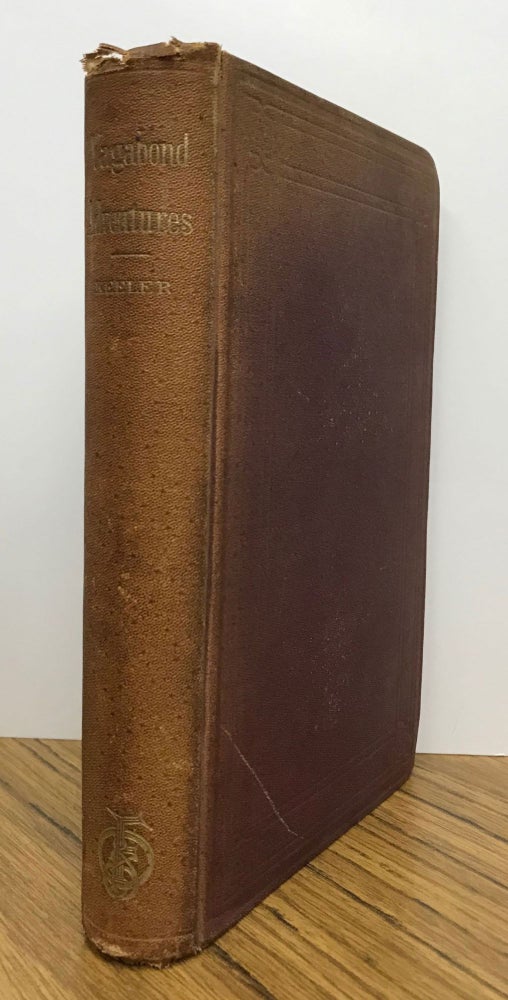VAGABOND ADVENTURES. Boston: Fields, Osgood, & Co., 1870. 12mo, pp. [[i-v] vi-viii [9-11] 12-13 [[14] 15-274 [275-276: blank], flyleaves at front and rear, original plum pebbled cloth, front and rear panels stamped in blind, spine panel stamped in gold, brown coated endpapers. First edition. "Ralph Keeler is the most extraordinary American that you’ve never heard of -- a performer, traveler and writer who blazed a trail through the heart of literary scene on both sides of the continent in the decade after the Civil War" (Thomas Ruys Smith, Head, Department of American Studies, University of East Anglia). "Ralph Keeler was born in 1840 amid the unsettled wilderness of northwest Ohio’s Great Black Swamp. Orphaned at eight and sent to live with abusive relatives, he ran away and became a cabin boy on steamers plying Lake Erie and its tributaries. Returning to Toledo, he bought a banjo, a 'woolly wig,' screwed pennies into his boot heels, traveled to the Ohio River, and became one of the most famous hambone-dancing, female-impersonating, wisecrack-delivering, blackface minstrel entertainers in America. Abandoning the stage, he traveled throughout Europe and wrote about his experiences. When he returned to the States, he joined the lecture circuit and toured with Mark Twain. Dividing his time between Boston, northwest Ohio, and San Francisco, he was friends with some of the greatest literary figures of his time, including satirist Bret Harte, novelist Charles Warren Stoddard, editor Thomas Bailey Aldrich, and essayist William Dean Howells. Keeler so impressed this distinguished fraternity that Twain published an essay entitled “Ralph Keeler” in 1889, as did Stoddard in 1905. Howells based a character, Fulkerson, in his 1890 novel A Hazard of New Fortunes, in part on Keeler’s life, and after Keeler’s death, penned his obituary. Keeler failed as a novelist, but in 1870 published a lively and engaging autobiography. He also wrote for periodicals, including HARPER'S NEW MONTHLY MAGAZINE and THE ATLANTIC MONTHLY, and traveled the Mississippi and Ohio valleys as a correspondent for EVERY SATURDAY. By the early 1870s, he had become a widely recognized and respected journalist, essayist, and nonfiction writer. Despite his meteoric rise, he never escaped the particular combination of drama and misfortune that defined his early years. In the minstrelsy, Keeler became adept at navigating in a world in which it was possible to present oneself in a variety of identities through simple, unsophisticated disguises. Whether performing in blackface or dancing in a wig and a skirt, he learned to use the technique to great success. As an adult, Keeler continued to employ these same innocent deceptions as a world traveler and journalist. Ultimately, his reliance on these thinly veiled, gentle masquerades led to his death when in 1873, at age thirty-three, he became embroiled in political intrigue that resulted in his murder by a Spanish loyalist off the coast of Cuba. Keeler’s passing brought an untimely end to a distinctive American literary voice. His early demise also denied him the lasting recognition and scholarly interest accorded to many of his contemporaries. William Dean Howells acknowledged as much many years after Keeler’s death when he lamented that Keeler’s autobiography had been undeservedly forgotten" (Larry Nelson, "Ralph Keeler: A Delightful Arabesque of Invention and Sentiment," Ohio History, 122 [2015], 29-48). Early owner's name and date on front flyleaf. Cloth worn at spine ends and corner tips, some patchy fading to clotha very good copy. (#167808).
Price: $250.00
No statement of printing.


